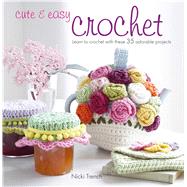A Christmas tree covered with dainty thread snowflakes can be enchanting, but not if those snowflakes are sadly drooping from the tree’s branches. To look their very best, snowflakes and many other decorative thread items require some sort of stiffening process.
Some items, such as simple easy crochet doilies or place mats, just need enough starch to keep them lying nice and flat. Use a little spray starch, a pressing cloth, and a warm iron on these projects, and you are done.
Other crocheted treasures call for stiffer measures. Doilies with ruffled frills benefit from heavier starch than their flat counterparts to keep their ruffles crisp and standing at attention. Flat items that hang, like Christmas snowflakes, usually need a heavy application of stiffener to keep them looking spiffy and looking pretty on your tree.
Boxes, baskets, angels, bells, and other three-dimensional items must be able to stand up on their own, so they need a strong dose of stiffener as well.
To stiffen simple easy crochet patterns of crocheted items properly, you will need a form, plastic wrap, rust-proof pins, and a stiffening solution. The form depends on the project to be stiffened. For a flat item, use a blocking board, an ironing board, or even a thick piece of cardboard or plastic foam. Cover the entire surface with plastic wrap to keep it dry, especially if you are using plastic foam, which may change shape if it gets wet.
For three-dimensional items, look for something that is the correct shape to place your project over. Foam balls covered in plastic wrap, or use balloons that you inflate to the appropriate size and then pop the balloons once the project is dry. This procedure works well for round or oval shapes. You can also stuff your project with crumpled plastic wrap until it is the shape you desire. If you use a glass or plastic bowl to shape a crocheted bowl or basket, you can later use the same bowl as a waterproof liner.
Rust-proof pins are essential for holding your crochet item in place until it dries. Make sure the pins will not rust, or you may wind up with discolored spots on your prized creation. When inserting pins between the stitches of your project, be careful not to split the threads. Make sure the curved parts are smooth, straight parts are straight, and symmetrical components are equal. Pin spaces and picots open if necessary, and use pins to create curves, points, and angles. Be generous with pins to make sure all components of your crocheted items will be held in place until it is dry. When I lay out a doily to be starched, I use a cloth or plastic measuring tape to measure it from the center, making sure it is pinned evenly from the center to the outside.
There are four primary methods of mixing solutions to stiffen crocheted projects. Each has its own advantages, so choose the method that will give you the effect you want. Whichever one you select, be sure to always let your project dry completely before removing any shaping forms or pins. When it is dried, I test the stiffness of the doily before removing all the pins. If it needs to be stiffened more, spray it again with your stiffing solution.
Commercial starch gives your projects more body than spray starch. Mix the starch following the manufacturer’s directions, using a heavy solution for ornaments and decorations. Use a clean, soft paintbrush to apply a coating of the starch. For a heavier application, put the starch into a bowl and dip your project. I like to put my doily on the board while it is still dry, making sure it is shaped the way it needs to be, especially for round doilies. They I spray it with a starch solution and let it dry. Commercial starch is easy to use and it washes out if you launder the piece.
White glue can be used to stiffen projects. Mix the glue with equal parts of water, and mix thoroughly, and paint it onto your project using a clean, soft paintbrush. If you want a softer finish, use a little more water in your mixture. White glue is readily available and gives a firm finish, but it isn’t waterproof.
Commercial fabric stiffener provides the most durable finish for your projects. However, you must keep in mind that it is permanent and will not wash out if you make a mistake in shaping your project or want the option of washing seasonal ornaments and storing them flat. Purchase this product at craft and hobby stores and follow the manufacturer’s directions for mixing and using the stiffener. After the stiffener has dried completely, shiny flakes of excess stiffener can be brushed away with a stiff toothbrush, and then an acrylic spray can be applied to help protect your project from heat and humidity.

